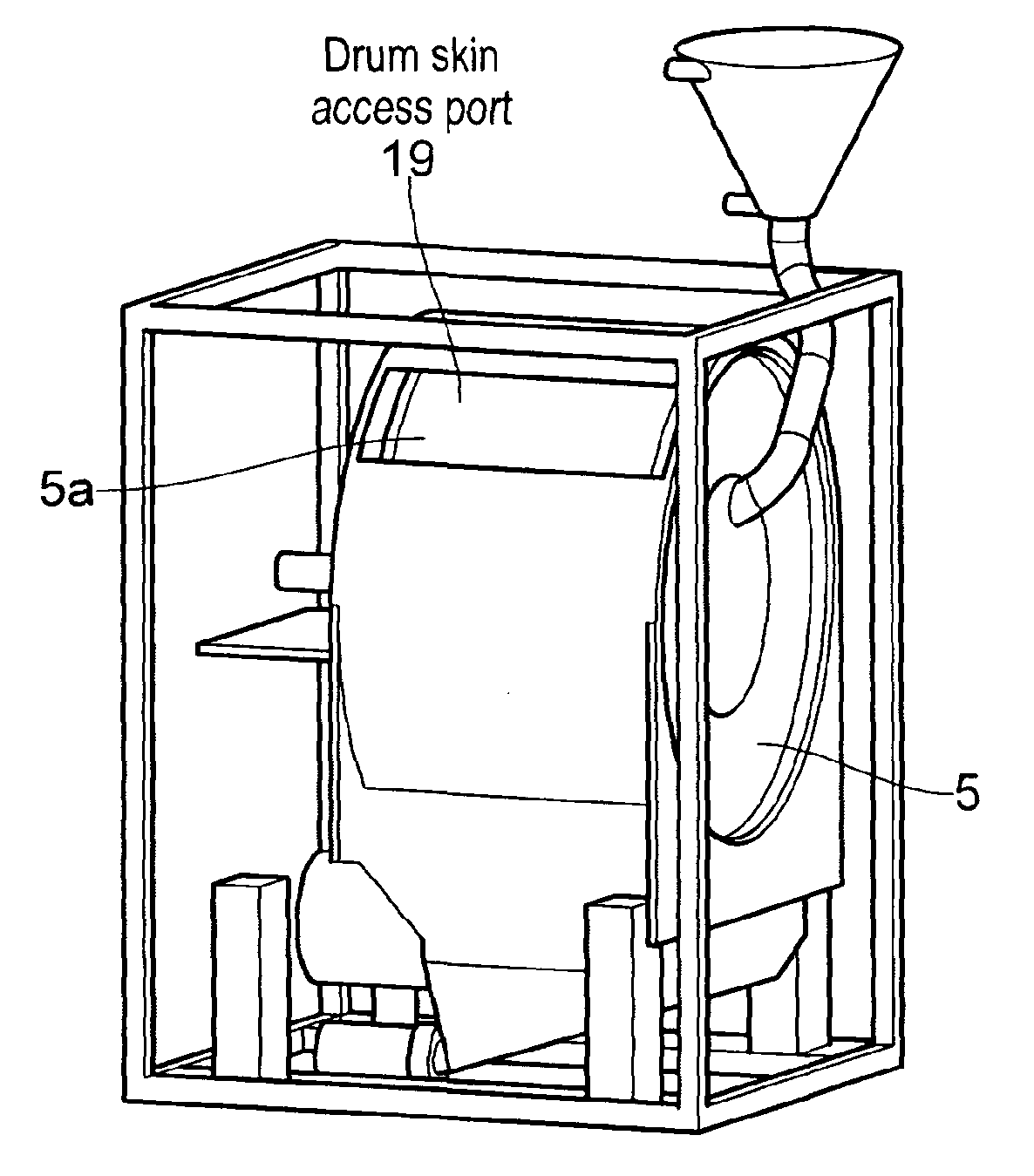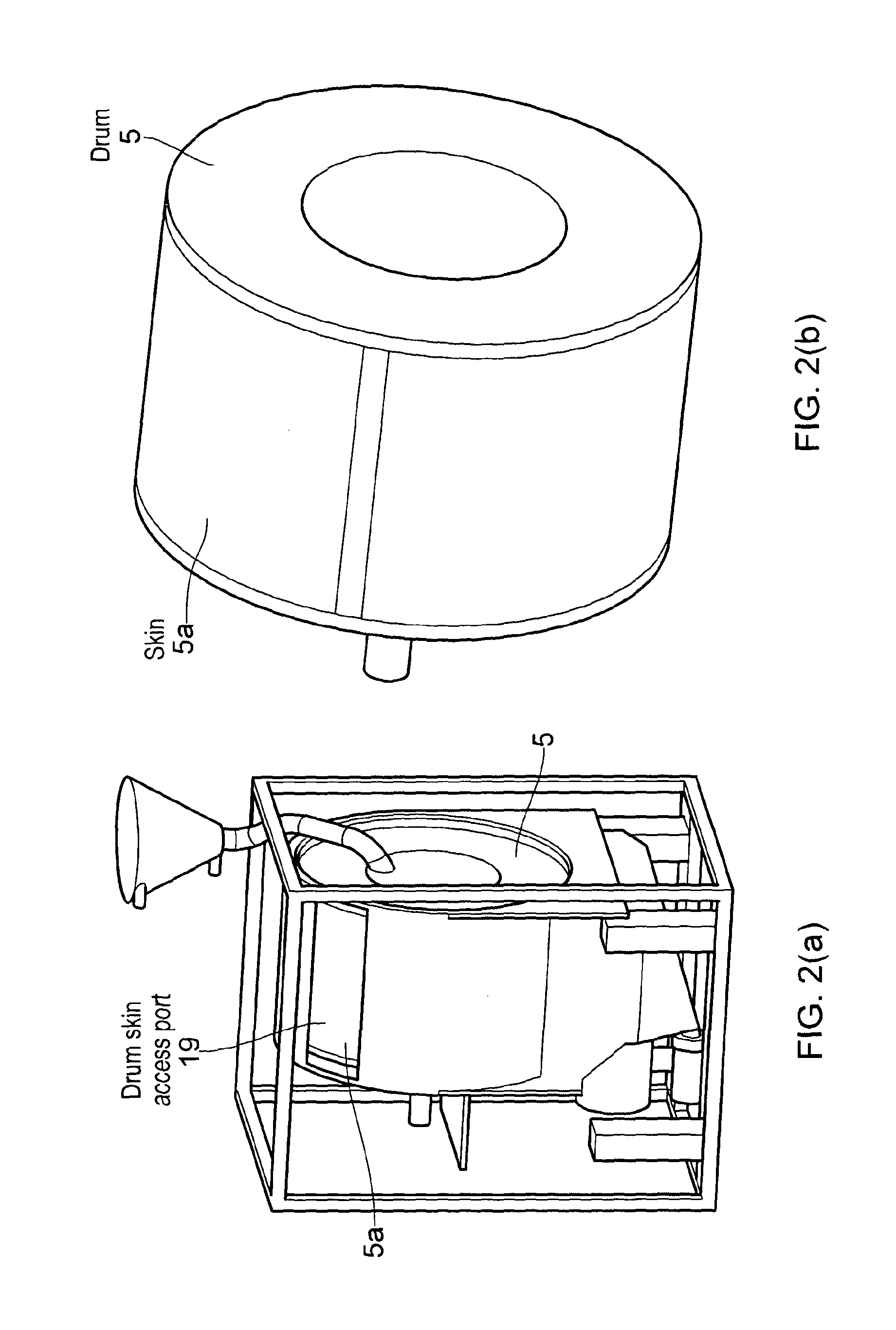Cleaning apparatus for soiled substrates having a removable cage sealing means
a technology of sealing means and cleaning apparatus, which is applied in the direction of washing machines with receptacles, textiles and papermaking, other washing machines, etc., can solve the problems of increasing the difficulty of reducing the water level (and, therefore, energy and detergent) in a pure aqueous process, and is extremely costly and detrimental to the environmen
- Summary
- Abstract
- Description
- Claims
- Application Information
AI Technical Summary
Benefits of technology
Problems solved by technology
Method used
Image
Examples
example 1
[0111]Woven cotton fabric (194 gm−2, Whaleys, Bradford, U.K.) was stained with coffee, lipstick, ball point pen, tomato ketchup, boot polish, grass, vacuum dirt, curry sauce and red wine following the methods described below:
(i) Coffee
[0112]10 g of MORRISONS® FULL ROAST coffee powder was dissolved in 50 ml distilled water at 70° C. A 1 cm3 aliquot of the ensuing solution was applied to the fabric using a synthetic sponge, within the confines of a 5 cm diameter circular plastic template; the stained fabric was then allowed to dry at ambient temperature (23° C.), after which the fabric was aged prior to use, by storage in the dark for 4 days.
(ii) Lipstick
[0113]REVLON® SUPER LUSTROUS lipstick (copper frost shade) was applied to the fabric using a synthetic sponge to provide a uniform coverage within the confines of a 5 cm diameter circular plastic template. The fabric was then aged following the procedure recounted for coffee.
(iii) Ball Point Pen
[0114]A black PAPER MATE® FLEX GRIP ULTR...
example 2
[0126]The XP1 wash test from Example 1 was repeated and compared to an ambient temperature control wash in the BEKO WM5120W (XP3). The BEKO WM5120W machine does not have an ambient wash cycle and, therefore, the 40° C. cotton cycle was again selected, but the machine heater was disabled so that an ambient wash could be performed. The same washload make up was employed as in Example 1 for XP3 in terms of stain set and sebum cloth addition. For this control, however, the detergent dosage used was significantly increased, as set out in Table 2. The sebum cloths were examined here, as these are notoriously difficult to clean at low (<40° C.) wash temperatures, and such grease removal is a key goal of the laundry industry. These cloths start out dark grey in colour in their unwashed state (see FIG. 6).
[0127]
TABLE 2XP1 & XP3 Wash Test DetailsDetergentDetergentWaterWashCycleMachineWashloadDosageDosageConsumptionTemperatureTimeTest #Type(kg)(g)(g / kg)(litres / kg)(° C.)(mins)XP1Xeros24893.74.2...
PUM
 Login to View More
Login to View More Abstract
Description
Claims
Application Information
 Login to View More
Login to View More - R&D
- Intellectual Property
- Life Sciences
- Materials
- Tech Scout
- Unparalleled Data Quality
- Higher Quality Content
- 60% Fewer Hallucinations
Browse by: Latest US Patents, China's latest patents, Technical Efficacy Thesaurus, Application Domain, Technology Topic, Popular Technical Reports.
© 2025 PatSnap. All rights reserved.Legal|Privacy policy|Modern Slavery Act Transparency Statement|Sitemap|About US| Contact US: help@patsnap.com



